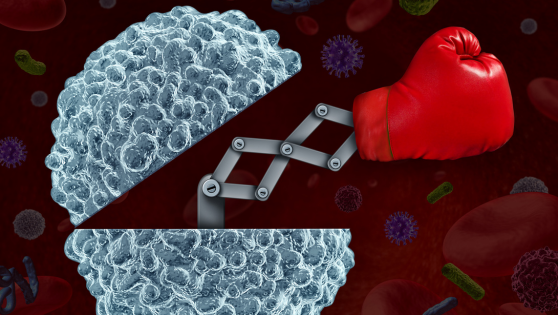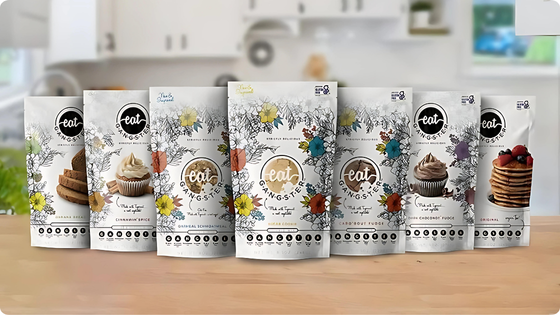In our ever-increasing quest for healthier lifestyles, the importance of a nutritious diet cannot be overstated. Fruits and vegetables play a vital role in achieving optimal health, providing essential vitamins, minerals, and antioxidants. However, concerns over pesticide exposure in produce have led to the development of the Dirty Dozen and Clean 15 lists. These lists help consumers make informed choices about the fruits and vegetables they purchase.
Understanding the Dirty Dozen
The Dirty Dozen is an annual list published by the Environmental Working Group (EWG), a non-profit organization dedicated to protecting human health and the environment. This list highlights the twelve fruits and vegetables with the highest pesticide residue levels. The ranking is based on the analysis of pesticide residue data from the U.S. Department of Agriculture (USDA) and the Food and Drug Administration (FDA). The 2023 Dirty Dozen list aims to raise awareness about the potential risks associated with consuming these produce items.
The Dirty Dozen
The Dirty Dozen comprises twelve produce items that, according to the EWG’s analysis, have the highest levels of pesticide residue. While it is crucial to note that these items do not necessarily exceed legal limits, they are more likely to contain multiple pesticide residues.
The 2023 Dirty Dozen list includes:
-
Strawberries:
Strawberries often top the Dirty Dozen list due to their susceptibility to pests and diseases. The analysis found residues of multiple pesticides on strawberries, making it essential to consider purchasing organic options whenever possible.
-
Spinach:
Spinach, known for its nutritional value, unfortunately, often carries pesticide residues. Washing conventionally grown spinach thoroughly can help reduce exposure, but choosing organic varieties is the best way to minimize pesticide intake.
-
Kale:
Kale’s popularity has soared in recent years, but it also ranks high on the Dirty Dozen list. Consumers are advised to opt for organic kale, especially when using it in raw form, such as in salads or smoothies.
-
Nectarines:
Nectarines are delicious stone fruits, but they can contain multiple pesticide residues. Selecting organic nectarines is recommended, particularly when consuming the skin.
-
Apples:
Apples, a staple fruit, are often treated with pesticides to combat insects and diseases. Washing and peeling conventionally grown apples can help reduce pesticide exposure, but choosing organic options is a better choice.
-
Grapes:
Grapes, both red and green varieties, are prone to high pesticide use. Residues can be found on the skin and inside the fruit, making it essential to consider organic grapes, especially for children.
-
Peaches:
Peaches, with their soft, fuzzy skin, can contain numerous pesticide residues. Opting for organic peaches is recommended to minimize exposure.
-
Cherries:
Cherries, whether sweet or tart, are prone to pest damage, leading to pesticide application. Washing conventionally grown cherries thoroughly can help, but choosing organic options is the safest choice.
-
Pears:
Pears, like apples, are often sprayed with pesticides to protect them from pests. Thoroughly washing and peeling conventionally grown pears can reduce pesticide residue, but selecting organic varieties is advisable.
-
Tomatoes:
Tomatoes are a versatile and widely consumed produce item. While the pesticide residues found on tomatoes are generally low, choosing organic varieties can minimize exposure.
-
Celery:
Celery, with its long stalks, can accumulate pesticide residues. Washing conventionally grown celery thoroughly and opting for organic celery when available is recommended.
-
Potatoes:
Potatoes, a dietary staple in many cultures, can contain pesticide residues, primarily on the skin. Choosing organic potatoes or peeling and washing conventionally grown ones can help reduce exposure.
These twelve fruits and vegetables are susceptible to a variety of pesticides, with some samples showing multiple residues. Washing and peeling produce can help reduce pesticide levels, but some residues may still remain. Therefore, choosing organic varieties of these items may be beneficial.
The Clean 15
In contrast to the Dirty Dozen, the Clean 15 is a list of fruits and vegetables that tend to have lower levels of pesticide residues. This list provides a guide for consumers who want to reduce their exposure to pesticides but may not have access to or the means to purchase organic produce. By focusing on the Clean 15, consumers can enjoy the health benefits of fruits and vegetables while minimizing pesticide exposure.
The 2023 Clean 15 list includes:
-
Avocados:
Avocados top the Clean 15 list due to their thick skin, which helps protect the fruit from pesticide penetration.
-
Sweet Corn:
Sweet corn, when grown conventionally, has relatively low pesticide residue levels. However, it’s important to note that genetically modified (GM) varieties are prevalent, and their cultivation practices may differ.
-
Pineapples:
Pineapples are generally less likely to have significant pesticide residue, making them a safer choice for consumers.
-
Onions:
Onions, with their protective layers, are less susceptible to pests, reducing the need for extensive pesticide use.
-
Papayas:
Papayas, particularly those imported from Hawaii, have low pesticide residue levels. However, it is recommended to choose organic papayas when possible.
-
Sweet Peas (Frozen):
Frozen sweet peas often have lower pesticide levels due to the timing of their harvest and processing methods.
-
Eggplants:
Eggplants typically have minimal pesticide residue, making them a safer option for consumers.
-
Asparagus:
Asparagus has low pesticide contamination levels, making it a healthier choice when consumed as part of a balanced diet.
-
Cauliflower:
Cauliflower generally has fewer pesticide residues, making it a safe option for those seeking to reduce exposure.
-
Cantaloupes:
Cantaloupes are less likely to have significant pesticide residues, providing a healthier choice when selecting conventionally grown fruit.
-
Broccoli:
Broccoli typically has lower levels of pesticide contamination, making it a safe and nutritious choice.
-
Mushrooms:
Mushrooms are generally grown in controlled environments, minimizing pesticide use and reducing residue levels.
-
Cabbage:
Cabbage, with its protective leaves, tends to have lower pesticide residue levels.
-
Honeydew Melons:
Honeydew melons generally have fewer pesticide residues, making them a safer choice for consumers.
-
Kiwis:
Kiwis, with their fuzzy skin, are typically less prone to pesticide contamination, providing a healthier option for consumers.
Making Informed Choices
While the Dirty Dozen and Clean 15 lists provide valuable information, they should be used as guidelines rather than strict rules. The benefits of consuming a wide variety of fruits and vegetables far outweigh the risks associated with pesticide exposure. Moreover, the use of pesticides in agriculture helps protect crops from pests and diseases, ensuring a stable and abundant food supply.
For those concerned about pesticide exposure, here are some additional tips:
-
Choose organic:
Whenever possible, opt for organic produce to reduce exposure to synthetic pesticides. Organic farming practices prioritize the use of natural pest management strategies.
-
Wash thoroughly:
Rinse all fruits and vegetables under running water to remove any dirt, debris, or pesticide residues. This simple step can significantly reduce exposure.
-
Peeling and trimming:
Peeling certain produce items, such as apples and cucumbers, can help further reduce pesticide exposure. However, keep in mind that peeling may also remove valuable nutrients, so consider the trade-off.
-
Diversify your diet:
By consuming a wide range of fruits and vegetables, you can minimize the potential risks associated with specific items. This approach ensures a balanced intake of nutrients while reducing exposure to any single pesticide.
The 2023 Dirty Dozen and Clean 15 lists serve as valuable resources for consumers who want to make informed choices about their produce purchases. While the Dirty Dozen highlights fruits and vegetables with higher pesticide residue levels, the Clean 15 provides options with lower residue levels.
By understanding these lists, consumers can prioritize organic options when it comes to the Dirty Dozen, and enjoy conventionally grown produce from the Clean 15 with reduced pesticide exposure. Remember, maintaining a balanced diet that includes a variety of fruits and vegetables is crucial for overall health, and these lists are meant to assist in making informed decisions about pesticide exposure.
If you are looking for more tips and support, join me over on my group page,The Village – A Natural HEALing Community, to get tons of information and tips to help you take your HEALTHY EATING and ACTIVE LIVING to the next level.






+leave a comment . . .